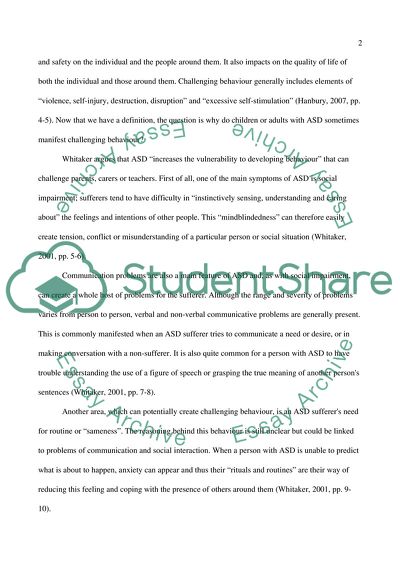Cite this document
(Understanding and Managing the Challenging Behavior of People with Literature review, n.d.)
Understanding and Managing the Challenging Behavior of People with Literature review. Retrieved from https://studentshare.org/psychology/1735983-understanding-and-managing-the-challenging-behaviour-of-people-with-autistic-spectrum-disorders
Understanding and Managing the Challenging Behavior of People with Literature review. Retrieved from https://studentshare.org/psychology/1735983-understanding-and-managing-the-challenging-behaviour-of-people-with-autistic-spectrum-disorders
(Understanding and Managing the Challenging Behavior of People With Literature Review)
Understanding and Managing the Challenging Behavior of People With Literature Review. https://studentshare.org/psychology/1735983-understanding-and-managing-the-challenging-behaviour-of-people-with-autistic-spectrum-disorders.
Understanding and Managing the Challenging Behavior of People With Literature Review. https://studentshare.org/psychology/1735983-understanding-and-managing-the-challenging-behaviour-of-people-with-autistic-spectrum-disorders.
“Understanding and Managing the Challenging Behavior of People With Literature Review”. https://studentshare.org/psychology/1735983-understanding-and-managing-the-challenging-behaviour-of-people-with-autistic-spectrum-disorders.


